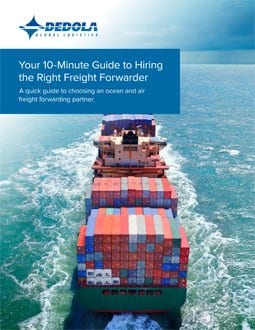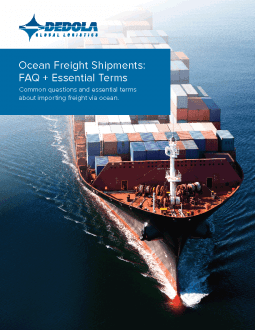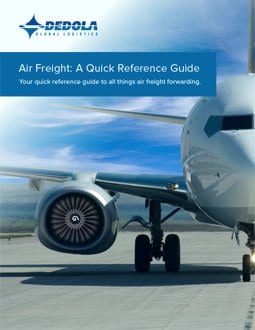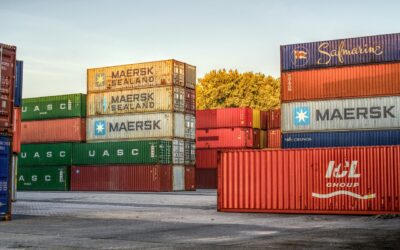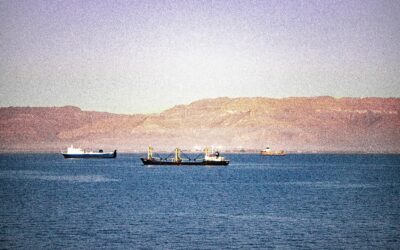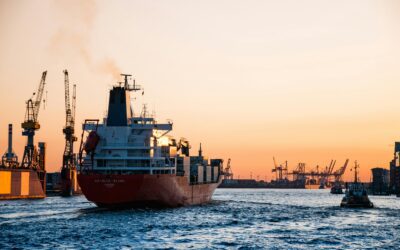RESOURCES
GUIDES – FREE DOWNLOAD
FAQs
BLANK DO NOT REMOVE
WHAT IS A FREIGHT FORWARDER / FREIGHT FORWARDING?
Freight forwarding services guarantee that products will get to the proper destination by an agreed upon date, and in good condition. The freight forwarding service utilizes established relationships with carriers of all kinds, from air freighters and trucking companies, to rail freighters and ocean liners. Freight forwarding services negotiate the best possible price to move the product along the most economical route by working out various bids and choosing the one that best balances speed, cost and reliability.
A freight forwarding service generally provides one or more estimates to the client along with advisement, when necessary. Considerations that effect price will range from origin and destination to special requirements, such as refrigeration or, for example, transport of potentially hazardous materials. Assuming the client accepts the forwarder’s bid, the freight is readied for shipping. The freight forwarding service then undertakes the responsibility of arranging the transport from point of origin to destination.
One of the many advantages of using freight forwarding is that it handles ancillary services that are a part of the international shipping business. Insurance and customs documentation and clearance are some examples. As a consolidator, a freight forwarding service might also provide Non-Vessel Operating Common Carrier (NVOCC) documentation, or bills of lading. Warehousing, risk assessment and management, and methods of international payment are also commonly provided to the client by the freight forwarding service.
A good freight forwarding service can save the client untold time and potential headaches while providing reliable transportation of products at competitive rates. A freight forwarding service is an asset to almost any company dealing in international transportation of goods, and is especially helpful when in-house resources are not versed in international shipping procedures.
I'M A FIRST TIME SHIPPER WHAT SHOULD I KNOW?
Tip #1: Prepare to load your container in less less than 2 hours – this will save container transport cost
When the driver shows up to your site, the first 2 hours are included in your fees. We recommend staffing up and preparing in advance to load the container as quickly as possible to avoid overtime charges.
Tip #2: Prepare Shipping Container Contents for Extremes
Containers are subject to extreme conditions. There are wild swings in temperature and humidity inside the container – they go through the Panama Canal and sometimes around the Cape. Containers are subjected to triple digit heat and humidity to sub-zero temperatures while in storage or in transport.
Tip #3: Carefully Declare ANY Organic Cargo
Plants, Edible Plants, Vegetables and Fruit are all treated differently depending on the origin and destination of the shipment. If customs finds any undeclared organic cargo, the can quarantine your container and charge you daily holding fees.
Tip #4: Properly Insure Your Cargo
Plan for “attrition”. All of the contents don’t always make it all of the time.
There will be some ”attrition’ – containers get inspected, sometimes by unscrupulous dock/deck hands…this isn’t REALLY considered stealing, as the items in transit, technically are the property of the shipping company*. See our blog entry on securing, insuring and properly declaring your container contents to manage risk of inspection, suspicion, mistakes and “”attrition””.
Tip #5: Understand that Freight Forwarding is both an art and a science.
Many companies and handlers are involved in moving your container, here are just a few possible examples: Trucking company(ies) outbound (your door to the port of origin or train yard), Crane Operations transferring container from truck to train, and train to ship. That’s just to get the container to the ship, then the reverse happens on the other side…it’s a REALLY rough ride, even in good weather.
ANY TIPS TO PREVENT DELAYS & ENSURE A SMOOTH SHIPPING PROCESS?
HOW CAN I FIND CUSTOMS CODES?
View the Harmonized Tariff Schedule HTS (2020 Revision 7) at https://hts.usitc.gov/current
U.S. Customs and Border Protection https://www.cbp.gov/document/report/filer-codes
CAN CARGO BE RELEASED WITHOUT PRESENTING THE ORIGINAL BILL OF LADING OB/L?
WHAT SHOULD I KNOW ABOUT AIR FREIGHT?
Anything hazardous, flammable, dangerous, chemicals, computer batteries, live animals, perishable items, etc. cannot be shipped via air freight.
WHY ARE SHIPPING RATES SO VOLATILE?
Another factor is fuel, or what is called the Bunker Fuel factor. This is a floating surcharge that the Carrier’s can change when oil prices rise or fall. It is called the BAF.
Another factor is when the Carrier has increases in costs such as when Terminal costs rise, especially with Unions, congestion problems, etc. Or when the U.S Rail costs increase for similar reasons. This is where the Carriers can add in new surcharges which have happened in the past and eventually get absorbed into the “all in” rate quoted.
A more recent reason for rate increases, was a knee jerk response to the tremendous downturn in traffic and volume as a result of the U.S. recession in 2008. This downturn caused many carriers to lose about 50% of their previous volume and while their costs remained the same or higher, and their revenue all but disappeared, they found themselves the beginning of this year looking at an average of $500, 000,000 in losses per Carrier. From late 2009 until May of 2010, most Carriers put a large portion of their fleet out of commission off the coast of Singapore. Thereby creating a vessel shortage, or a false space problem. This gave them all excuse to raise their rates again, in order to salvage their businesses. This type of thing is not normal.
HOW DO I PAY FOR FREIGHT?
DO YOU OFFER CREDIT PLANS?
GLOSSARY OF SHIPPING INDUSTRY TERMS
Glossary sourced from U.S. Maritime Administration (MARAD).
A
Agency Tariff
A tariff published by an agent on behalf of several carriers.
Agent (Agt.)
A person authorized to transact business for and in the name of another person or company.
Types of agents are:
1. brokers,
2. commission merchants,
3. resident buyers,
4. sales agents,
5. manufacturer’s representatives.
Aggregate Shipment
Numerous shipments from different shippers to one consignee that are consolidated and treated as a single consignment.
Air Waybill
The forwarding agreement or carrying agreement between shipper and air carrier and is issued only in nonnegotiable form.
Airline Terminal Fee
Air shipments include an airline terminal fee, which is charged as a fee for handling the cargo.
Assignment
A term commonly used in connection with a bill of lading. It involves the transfer of rights, title and interest in order to assign goods by endorsing the bill of lading
B
BAF
Abbreviation for “Bunker Adjustment Factor.”
Used to compensate steamship lines for fluctuating fuel costs. Sometimes called “Fuel Adjustment Factor” or FAF.
Bill of Lading (BOL or B/L)
A bill of lading is a shipping document that outlines the voyage of a shipment.
Blank Sailing
A blank sailing is a sailing that has been canceled by the carrier, which may mean one port is being skipped, or the entire string is canceled. Blank sailings happen for a couple of reasons.
Blind Shipment
A B/L wherein the paying customer has contracted with the carrier that shipper or consignee information is not given.
Bond Port
Port of initial Customs entry of a vessel to any country. Also known as First Port of Call.
Bonded Freight
Freight moving under a bond to U.S. Customs or to the Internal Revenue Service, to be delivered only under stated conditions.
Bonded Warehouse
A warehouse authorized by Customs authorities for storage of goods on which payment of duties is deferred until the goods are removed. Booking Arrangements with a carrier for the acceptance and carriage of freight; i.e., a space reservation.
Broker
A person who arranges for transportation of loads for a percentage of the revenue from the load.
Brokerage
Freight forwarder/broker compensation as specified by ocean tariff or contract
C
Cargo Manifest
A manifest that lists all cargo carried on a specific vessel voyage.
Cargo NOS
Cargo Not Otherwise Specified. Usually the rate entry in a tariff that can apply to commodities not covered under a specific item or sub– item in the applicable tariff.
Carrier
Any person or entity who, in a contract of carriage, undertakes to perform or to procure the performance of carriage by rail, road, sea, air, inland waterway or by a combination of such modes.
Carrier’s Certificate
A certificate required by U.S. Customs to release cargo properly to the correct party
Cartment
Customs form permitting in–bond cargo to be moved from one location to another under Customs control, within the same Customs district. Usually in motor carrier’s possession while draying cargo.
CI
Abbreviation for “Cost and Insurance.” A price that includes the cost of the goods, the marine insurance and all transportation charges except the ocean freight to the named point of destination.
CIF (named port)
Abbreviation for “Cost, Insurance, Freight.” (Named Port) Same as C&F or CFR except seller also provides insurance to named destination.
CIF&C
Price includes commission as well as CIF.
CIF&E
Abbreviation for “Cost, Insurance, Freight and Exchange.”
Clean Bill of Lading
A receipt for goods issued by a carrier with an indication that the goods were received in “apparent good order and condition,” without damage or other irregularities. If no notation or exception is made, the B/L is assumed to be “cleaned.”
Container Manifest
Document showing contents and loading sequence, point of origin, and point of destination for a container. Vessels are required by law to carry such a document for each container carried.
Cost, Insurance and Freight (CIF)
Cost of goods, marine insurance and all transportation (freight) charges are paid to the foreign point of delivery by the seller.
C–TPAT (Customs–Trade Partnership Against Terrorism)
A voluntary supply chain security partnership established by U.S. Customs and Border Protection in November 2001. Meeting the C–TPAT standards allows cargo owners faster processing through customs formalities and inspections.
Customhouse Broker
A person or firm, licensed by the treasury department of their country when required, engaged in entering and clearing goods through Customs for a client (importer).
Customs Bonded Warehouse
A warehouse authorized by Customs to receive duty–free merchandise.
D
Deconsolidation Point
Place where loose or other non–containerized cargo is ungrouped for delivery.
Demurrage
A penalty charge against shippers or consignees for delaying the carrier’s equipment or vessel beyond the allowed free time. The free time and demurrage charges are set forth in the charter party or freight tariff. See also Detention and Per
Detention
A penalty charge against shippers or consignees for delaying carrier’s equipment beyond allowed time. Demurrage applies to cargo; detention applies to equipment.
Dockage
Refers to the charge assessed against the vessel for berthing at the facility or for morring to a vessel so berthed.
Drayage
Charge made for local hauling by dray or truck. Same as Cartage.
E
EBS (Emergency Bunker Surcharge)
Carriers implement an EBS once fuel costs have risen so high that they cut into carriers’ profits.
Export License
A government document which permits the “Licensee” to engage in the export of designated goods to certain destinations.
Export Rate
A rate published on traffic moving from an interior point to a port for transshipment to a foreign country.
Ex-Works
An Incoterm of sale meaning the seller delivers to the buyer at seller’s named premises.
F
FCL
Abbreviation for “Full Container Load.”
FD
Abbreviation for “Free Discharge.”
FOB (Free on Board)
FOB is an incoterm, which as of Incoterms® 2010 (and confirmed by Incoterms® 2020), is only suitable for ocean shipments that will be delivered straight to the vessel.
FMC (F.M.C.)
Federal Maritime Commission. The U.S. Governmental regulatory body responsible for administering maritime affairs including the tariff system, freight forwarder licensing, enforcing the conditions of the Shipping Act and approving conference or other carrier agreements.
Foreign Trade Zone
A free port in a country divorced from Customs authority but under government control. Merchandise, except that which is prohibited, may be stored in the zone without being subject to import duty regulations.
G
GRI (General Rate Increase)
A GRI is a general rate increase that carriers can apply to their ocean freight rates.
General Order (G.O.)
When U.S. Customs orders shipments without entries to be kept in their custody in a bonded warehouse.
H
Harmonized System of Codes (HS)
An international goods classification system for describing cargo in international trade under a single commodity–coding scheme. Developed under the auspices of the Customs Cooperations Council (CCC), an international Customs organization in Brussels, this code is a hierarchically structured product nomenclature containing approximately 5,000 headings and subheadings.
It is organized into 99 chapters arranged in 22 sections. Sections encompass an industry (e.g., Section XI, Textiles and Textile Articles); chapters encompass the various materials and products of the industry (e.g., Chapter 50, Silk; Chapter 55, Manmade Staple Fibers; Chapter 57, Carpets).
The basic code contains four–digit headings and six–digit subheadings. Many countries add digits for Customs tariff and statistical purposes. In the United States, duty rates will be the eight–digit level; statistical suffixes will be at the ten–digit level.
The Harmonized System (HS) is the current U.S. tariff schedule (TSUSA) for imports and is the basis for the ten–digit Schedule B export code.
I
Importer of Record
The importer of record is responsible for Customs documentation and payment.
INCOTERMS
The recognized abbreviation for the International Chamber of Commerce Terms of Sale. These terms were last amended, effective July 1, 1990.
International Ship and Port Security Code (ISPS)
It is an amendment to the Safety of Life at Sea (SOLAS) Convention (1974/1988) on minimum security arrangements for ships, ports and government agencies. Having come into force in 2004, it prescribes responsibilities to governments, shipping companies, shipboard personnel, and port/ facility personnel to “detect security threats and take preventative measures against security incidents affecting ships or port facilities used in international trade.”
K
Known Shipper
Known shipper is a preferred status for companies shipping via air, and a necessary status to ship via passenger planes taking off from the US.
L
L/C
Abbreviation for “Letter of Credit.”
Laden
Loaded aboard a vessel. Lading Refers to the freight shipped; the contents of a shipment.
Landed Cost
The total cost of a good to a buyer, including the cost of transportation.
LCL
Abbreviation for “Less than Container Load.” The quantity of freight which is less than that required for the application of a container load rate. Loose Freight.
Letter of Credit (LC)
A document, issued by a bank per instructions by a buyer of goods, authorizing the seller to draw a specified sum of money under specified terms, usually the receipt by the bank of certain documents within a given time.
Some of the specific descriptions are:
• Back–to–Back: A new letter of credit issued to another beneficiary on the strength of a primary credit. The second L/C uses the first L/C as collateral for the bank. Used in a three–party transaction.
• Clean: A letter of credit that requires the beneficiary to present only a draft or a receipt for specified funds before receiving payment.
• Confirmed: An L/C guaranteed by both the issuing and advising banks of payment so long as seller’s documents are in order, and the L/C terms are met.Only applied to irrevocable L/C’s. The confirming bank assumes the credit risk of the issuing bank.
• Deferred Payment: A letter of credit issued for the purchase and financing of merchandise, similar to acceptance–type letter of credit, except that it requires presentation of sight drafts payable on an installment basis.
• Irrevocable: An instrument that, once established, cannot be modified or cancelled without the agreement of all parties concerned.
• Non cumulative: A revolving letter of credit that prohibits the amount not used during the specific period from being available afterwards.
• Restricted: A condition within the letter of credit which restricts its negotiation to a named bank.
• Revocable: An instrument that can be modified or cancelled at any moment without notice to and agreement of the beneficiary, but customarily includes a clause in the credit to the effect that any draft negotiated by a bank prior to the receipt of a notice of revocation or amendment will be honored by the issuing bank. Rarely used since there is no protection for the seller. 63
• Revolving: An irrevocable letter issued for a specific amount; renews itself for the same amount over a given period.
• Straight: A letter of credit that contains a limited engagement clause which states that the issuing bank promises to pay the beneficiary upon presentation of the required documents at its counters or the counters of the named bank.
• Transferable: A letter of credit that allows the beneficiary to transfer in whole or in part to another beneficiary any amount which, in aggregate, of such transfers does not exceed the amount of the credit.Used by middlemen.
• Unconfirmed: A letter of credit forwarded to the beneficiary by the advising bank without engagement on the part of the advising bank.
M
Manifest
Document that lists in detail all the bills of lading issued by a carrier or its agent or master for a specific voyage. A detailed summary of the total cargo of a vessel. Used principally for Customs purposes.
Marine Insurance
Broadly, insurance covering loss or damage of goods at sea. Marine insurance typically compensates the owner of merchandise for losses sustained from fire, shipwreck, etc., but excludes losses that can be recovered from the carrier.
N
Net Tonnage (NT)
The replacement, since 1994, for “Net Register Tonnage.” Theoretically the cargo capacity of the ship. Sometimes used to charge fees or taxes on a vessel. The formula is(0.2+0.02 log10(Vc)) Vc (4d/3D)2 , for passenger ships the following formula is added: 1.25 (GT+10000)/10000 (N1+(N2/10)), where Vc is the volume of cargo holds, D is the distance between ship’s bottom and the uppermost deck, d is the draught, N1 is the number of cabin passengers, and N2 is the number of deck passengers.) “Ton” is figured as a 100 cubic foot ton. An approximate conversion ratio is 1NT = 1.7GT and 1GT = 1.5DWT.
Non–Vessel Operating Common Carrier (NVOCC)
A cargo consolidator in ocean trades who will buy space from a carrier and sub–sell it to smaller shippers. The NVOCC issues bills of lading, publishes tariffs and otherwise conducts itself as an ocean common carrier, except that it will not provide the actual ocean or intermodal service.
P
P&I
Abbreviation for “Protection and Indemnity,” an insurance term.
Packing List
Itemized list of commodities with marks/numbers but no cost values indicated.
Place of Receipt
Location where cargo enters the care and custody of carrier.
R
Roll
To re–book cargo to a later vessel
S
Shipper’s Letter of Instruction (SLI)
An SLI is a necessary document for exporting goods from the U.S.
Sea Waybill
Document indicating the goods were loaded onboard when a document of title (b/L) is not needed. Typically used when a company is shipping goods to itself.
Shipper
The person or company who is usually the supplier or owner of commodities shipped. Also called Consignor
Shipper’s Instructions
Shipper’s communication(s) to its agent and/or directly to the international water–carrier. Instructions may be varied, e.g., specific details/clauses to be printed on the B/L, directions for cargo pickup and delivery.
Shipper’s Letter of Instructions for issuing an Air Waybill
The document required by the carrier or freight forwarders to obtain (besides the data needed) authorization to issue and sign the air waybill in the name of the shipper.
Shipper’s Load & Count (SL&C)
Shipments loaded and sealed by shippers and not checked or verified by the carriers.
Standard Industrial Classification (SIC)
A standard numerical code used by the U.S. Government to classify products and services.
Standard International Trade Classification (SITC)
A standard numeric code developed by the United Nations to classify commodities used in international trade, based on a hierarchy.
Storage Charges
Storage charges may apply to your shipment even if you don’t plan on putting your shipment into storage.
T
Tariff (Trf.)
A publication setting forth the charges, rates and rules of transportation companies.
Terminal Charge
A charge made for a service performed in a carrier’s terminal area.
Third Party Logistics (3PL)
A company that provides logistics services to other companies for some or all of their logistics needs. It typically includes warehousing and transportation services. Most 3PL’s also have freight forwarding licenses
Transportation & Exit (T&E)
Allows foreign merchandise arriving at one port to be transported in bond through the U.S. to be exported from another port, without paying duty
W
Wharfage
Wharfage is the fee charged for use of the wharf to unload a vessel.
Waybill (WB)
A document prepared by a transportation line at the point of a shipment; shows the point of the origin, destination, route, consignor, consignee, description of shipment and amount charged for the transportation service. It is forwarded with the shipment or sent by mail to the agent at the transfer point or waybill destination. Abbreviation is WB. Unlike a bill of lading, a waybill is NOT a document of title
Recent Blog Articles
How E-Commerce Companies Benefit from Using Freight Forwarders Beyond Courier Services
Let’s explore how e-commerce companies can use freight forwarders to enhance their logistics operations, focusing on air and ocean freight, consolidation services, and warehousing.
Red Flags Associated with Emailed Unbelievably Low Rates: The Lure and Consequences in Freight Forwarding
The stark reality is that these bargain rates can hide a multitude of costs, the most critical being the risk of shipment delays, known in industry parlance as “rollings.”
The Panama and Suez Canals: A Guide for Importers Navigating These Supply Chain Disruptions
The unfolding Panama and Suez Canal situations demand proactive and strategic responses. At DGL, we are dedicated to staying ahead of the curve, ensuring that your shipments navigate these complex challenges efficiently.
Blank Sailings: A Guide for Logistics and Supply Chain Professionals
‘Blank sailings’ is a term that logistics and supply chain professionals, especially those involved in importing goods to the U.S. from Asia, need to be intimately familiar with.
10 Must-Have Qualities in a Top-Notch Freight Forwarder
If you work in logistics and supply chain and import goods from Asia, Europe, or South America to the US, you’re using a freight forwarder to ship your goods. This article lists the 10 best attributes to look for in a freight forwarder.
Navigating Potential Disruptions: ILA’s Potential Strike – A Critical Alert for Importers
The potential ILA strike highlights the fragility of global supply chains to labor disputes. Proactive planning, supply chain strategy diversification, and maintaining flexibility are key to mitigating these disruptions.
Blog Articles by Topic
Ocean Freight and LCL
Air Freight
E-commerce and Amazon
Compliance
Getting Started
What You Should Be Asking Your Freight Forwarder
What Is a Customs Bond and Why Importers Need One
11 Essential Global Logistics Terms
Ocean Freight Routing Terms Explained


